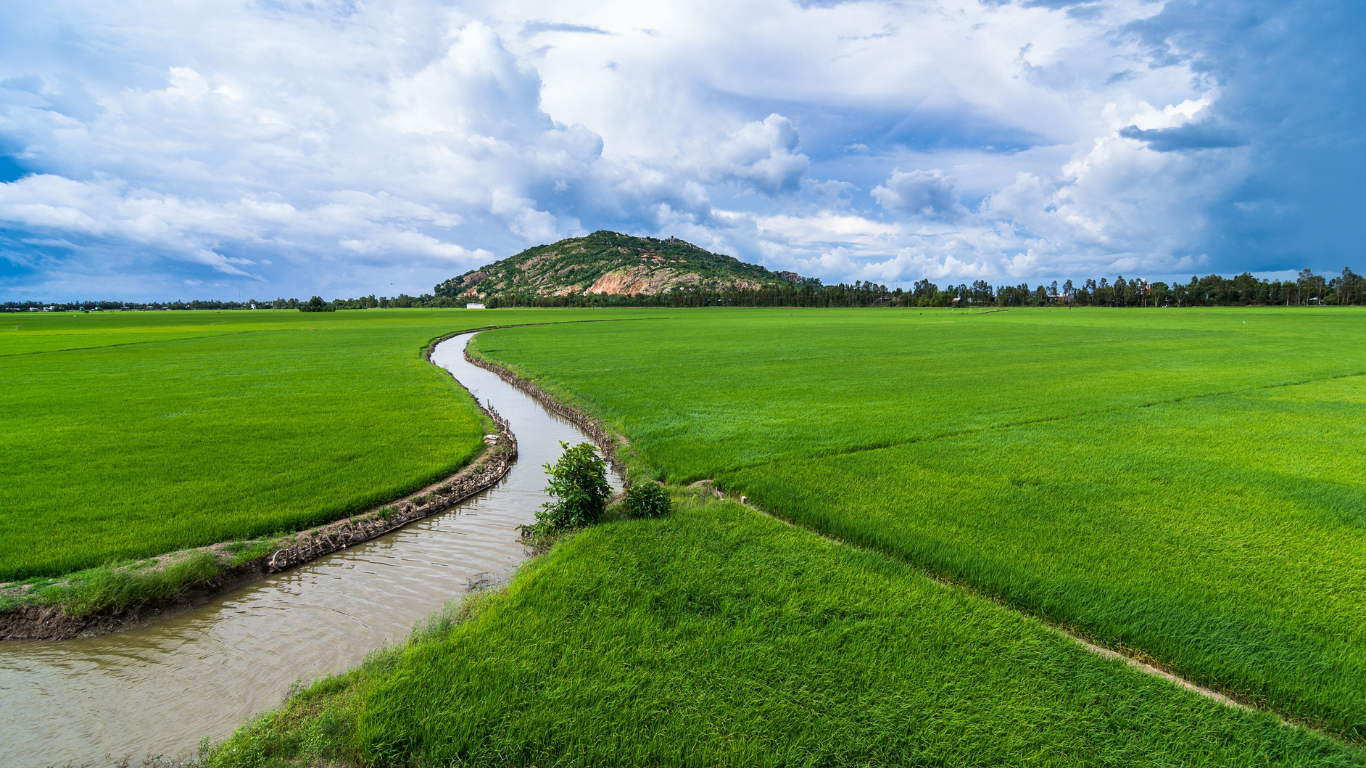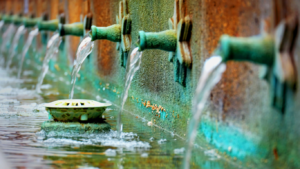Water is life, and irrigation is how we share it with crops, gardens, and landscapes. It’s more than just sprinkling water on plants—it’s a practice that’s shaped civilizations, fed billions, and changed how we live with nature. From ancient ditches to modern sprinklers, irrigation is full of surprises. Let’s explore some fascinating facts about this vital system, diving into its history, clever methods, and impact on our world. Whether you’re a farmer, gardener, or just curious, these insights will make you see irrigation in a whole new way.
Ancient Irrigation: The Roots of Farming
Irrigation isn’t new—it’s as old as civilization itself. Around 6000 BCE, people in Mesopotamia dug channels to bring river water to their fields. This simple idea turned dry lands into fertile farms, feeding growing populations. The Egyptians used the Nile’s floods to water crops, building basins to trap water. In China, the Dujiangyan system, built over 2,000 years ago, still works today, diverting river water without dams. These early systems show how clever humans were, using nature’s water to grow food. Irrigation wasn’t just about survival; it helped create cities, trade, and culture by ensuring steady food supplies.
Shadoofs and Waterwheels: Early Tools
The shadoof, a hand-operated lever, was used in ancient Egypt to lift water from rivers. It’s like a seesaw with a bucket, simple but effective. Waterwheels, used in Persia, scooped water from streams into channels. These tools saved time and effort, letting farmers water larger areas. They’re proof that early people didn’t need fancy tech to solve big problems—just creativity.
Qanats: Underground Wonders
In ancient Persia, qanats were tunnels dug to carry water from hills to dry plains. These underground channels kept water cool and safe from evaporation. Some qanats are still in use, showing how smart and sustainable old methods were. They took years to build but saved entire communities from drought.
Modern Irrigation: High-Tech Watering
Today, irrigation is a mix of science and technology. Farmers use computers, sensors, and even drones to water crops just right. Drip irrigation, where pipes deliver water straight to plant roots, saves tons of water compared to old flood methods. Sprinklers mimic rain, covering large fields evenly. These advancements mean less waste and better harvests, especially in dry regions. Modern systems also track weather and soil, so farmers know exactly when and how much to water. It’s like giving plants a custom drink, and it’s changing how we grow food in a world with less water to spare.
Drip Irrigation: A Game-Changer
Drip irrigation is like giving plants a slow, steady sip. Small tubes drip water directly to roots, cutting waste by up to 60% compared to flooding fields. It’s perfect for dry areas or crops like grapes and tomatoes. Farmers love it because it saves water and boosts yields, making it a win for both nature and wallets.
Smart Irrigation: Tech Meets Water
Smart systems use sensors to check soil moisture and weather forecasts. They automatically adjust watering to avoid overdoing it. Some even use apps, so farmers can control sprinklers from their phones. This tech saves water, cuts costs, and helps grow more food with less effort, especially in places facing droughts.
Irrigation’s Role in Feeding the World
Irrigation is a hero in global food production. About 20% of the world’s farmland is irrigated, but it produces 40% of our food. That’s because irrigated crops grow faster and yield more than those relying on rain. In places like India and China, rice paddies depend on irrigation to feed millions. Without it, we’d struggle to grow enough food for the planet’s 8 billion people. But it’s not perfect—overusing water can harm rivers and lakes. Still, irrigation’s ability to turn dry land into lush fields is a big reason we can feed so many people today.
Rice and Irrigation: A Perfect Match
Rice needs lots of water, and irrigation makes it possible to grow it in dry regions. Flooded paddies, kept wet by canals or pumps, create the perfect home for rice plants. In Asia, irrigation systems support rice fields that feed over half the world’s population. It’s hard to imagine sushi or fried rice without irrigation’s help.
Challenges: Water Scarcity
Irrigation uses about 70% of the world’s freshwater, which can strain rivers and aquifers. In places like California, over-pumping groundwater causes land to sink. Finding ways to irrigate without drying up water sources is a big challenge, pushing experts to develop smarter, less wasteful systems.
Environmental Impacts: The Good and the Bad
Irrigation transforms deserts into farms, but it’s a balancing act. It can green up dry areas, boosting biodiversity and creating new habitats. But overuse can lead to problems like salinization, where salt builds up in soil, making it hard for plants to grow. Draining wetlands for irrigation can also harm wildlife. The key is sustainable irrigation—using just enough water and protecting ecosystems. Projects like restoring wetlands while irrigating nearby fields show it’s possible to grow food and care for nature at the same time.
Salinization: The Silent Threat
When water evaporates from irrigated fields, it can leave salt behind. Over time, this salt builds up, turning fertile soil into barren land. In places like Australia, salinization has ruined farmland. Farmers now use better drainage and less water to fight this problem, but it’s a slow fix.
Restoring Balance: Eco-Friendly Irrigation
Some farmers use irrigation to restore ecosystems, like flooding wetlands to mimic natural cycles. This helps birds and fish thrive while still watering crops. Techniques like rainwater harvesting also reduce pressure on rivers, showing irrigation can work with nature, not against it.
Irrigation Around the World: A Global Story
Irrigation looks different everywhere. In India, monsoon rains fill canals for rice and wheat. In Israel, drip irrigation turns deserts into orchards. The U.S. uses giant sprinklers for cornfields. Each region adapts to its climate and water supply, showing how creative people are at solving water challenges. But not everyone has access—small farmers in Africa often rely on rain, which can fail. Helping them get simple irrigation tools could boost food security and lift communities out of poverty. Irrigation’s global story is about adapting to nature’s limits.
Israel’s Desert Miracle
Israel, a dry country, grows tons of fruits and veggies thanks to drip irrigation. They use every drop wisely, recycling water and using tech to monitor crops. This has turned sandy deserts into green farms, showing how innovation can beat tough conditions.
Africa’s Irrigation Gap
In sub-Saharan Africa, only 6% of farmland is irrigated, compared to 37% in Asia. Droughts often destroy crops, leaving farmers struggling. Simple tools like treadle pumps could help, but cost and access are barriers. Investing in small-scale irrigation could change lives here.
Fun Facts About Irrigation
Irrigation has some quirky sides. Did you know the Romans built aqueducts to irrigate vineyards? Or that some farmers use fish in rice paddies to eat pests and fertilize crops? In Australia, lasers help level fields for even water flow. Irrigation also inspired art and festivals in ancient cultures, celebrating water’s gift to life. These fun tidbits show how irrigation isn’t just practical—it’s woven into human creativity and culture, making it more than just a farming tool.
Laser-Leveling: Precision Farming
In Australia, farmers use lasers to make fields perfectly flat. This ensures water spreads evenly, saving up to 30% more water than uneven fields. It’s like giving crops a perfectly level dance floor, and it’s boosted harvests in dry regions.
Fish in Fields: Nature’s Helpers
In Asia, some farmers raise fish in flooded rice paddies. The fish eat pests and add nutrients to the soil, while the rice provides shade. It’s a win-win that boosts food production and saves farmers money on fertilizers.
The Future of Irrigation: What’s Next?
Irrigation’s future is exciting. Scientists are working on solar-powered pumps to cut energy costs. Robots and AI could soon monitor fields and adjust water in real-time. There’s also talk of using seawater for irrigation by desalinating it affordably. These ideas aim to make irrigation sustainable, especially as climate change makes water scarcer. The goal is to grow more food with less water, ensuring we can feed the world without harming the planet. Irrigation’s next chapter will be about innovation and balance.
Solar-Powered Irrigation
Solar pumps use the sun’s energy to pull water from wells or rivers. They’re cheap, clean, and perfect for remote farms. In India, solar irrigation is helping small farmers grow crops year-round, boosting income without relying on pricey fuel.
AI and Robots: The New Farmers
AI-powered systems can predict exactly when crops need water, cutting waste. Robots might soon roam fields, checking soil and watering plants with precision. These tools could make irrigation smarter, saving water and helping farmers grow more with less effort.




